Myrrh 50g
£10.67
Latin Name: Commiphora myrrha
Plant Family: Burseraceae
Common Names: Common Myrrh, Gum Myrrh, Bdellium, Bol, Bola, Didthin, Gomme de Myrrhe, Herabol Myrrh, Myrrha & Myrrhe. The ancient Egyptians used Myrrh by the boatload; as salves for wounds and sores, facial treatments, perfume, insect repellant, incense and it was even a key ingredient in their embalming process.
Out of stock
Description
Myrrh is listed as having the following Properties:
- Antiseptic: – preventing the growth of disease-causing microorganisms
- Analgesic: – acting to relieve pain
- Anti-inflammatory: – reduces inflammation
- Anti-fungal: – active against fungi, prevents fungal growth
- Antimicrobial: – destroys or stops the growth of microorganisms
- Expectorant: – promotes the secretion of sputum by the air passages
- Cicatrisant: – skin-healing, wound healing or cell regenerative
- Insect Repellant: – a substance that deters insects from approaching or settling
Myrrh contains a large number of compounds which have yet to be fully identified. The following quote relates to the essential oil of Myrrh; as it is known that many of the effective compounds of a resin resides in its resin portion rather than its oil and are too heavy to distill, we are missing a great deal of the picture by failing to use the complete substance. A lot more work needs to be done.
“Sue Clarke BSc (Hons) PhD, in Essential Chemistry for Aromatherapy (Second Edition), 2008 states: “A typical chemical composition would be sesquiterpenes δ-elemene (25–30%), α-copaene (9–12%), β-elemene (5–7%), bourbonene (4–6%), α-bergamotene (4.0–5.5%), lindestrene (3–4%) ketones curerenone (10–13%) and methyl isobutyl ketone (5.5–6.5%), nitrogen heterocyclic methylfurans (5–8%).”
Uses & Benefits:
- Many resins have common beneficial effects as remedies, on the respiratory system, having a cleansing action that is useful against cold, catarrh, sore throats and other common nose & throat maladies.
- Myrrh is also considered effective in combating many common problems within the mouth; (ulcers, weak teeth & gums) and is incorporated into toothpastes for this purpose.
- Its cicatrisant properties make it useful in applying to the skin to aid eczema, ulcers, boils, bedsores & minor wounds. It lends itself to being made into salves, balms & creams for this purpose.
- With antifungal properties it is also helpful in dealing with fungal skin problems.
- Used as a fumigant – to repel fleas & mosquitoes
The combination of its properties also gives it a tonic action on the digestive system to ease diarrhoea and flatulence and causes it to act as a uterine stimulant which results in relief from painful periods. (As a uterine stimulant its use should be avoided in pregnancy).
History:
Myrrh has a history dating back thousands of years that boasts antiseptic and anti-inflammatory properties.
The ancient Egyptians used Myrrh by the boatload; as salves for wounds and sores, facial treatments, perfume, insect repellant, incense and it was even a key ingredient in their embalming process. It is both a magical & medicinal substance, one that wise men (Magi) & women throughout the ages have known about and used.
The medical practitioners of the ancient Greeks and Romans (Hippocrates, Pliny the Elder etc.) had already recognised and documented Myrrhs antiseptic, anti-inflammatory and analgesic properties, and the demand for this expensive dried sap was so great that it had made the southern Arabians the richest people on earth. By the time that Jesus was born Myrrh was worth more than its weight in Gold (as was Frankincense – comprising the three gifts from the Magi). The Magi knew the value of Myrrh for its medicinal properties – it was indeed their ‘cure’.
The rise of Christianity and subsequent fall of the Roman Empire (despite the significance given to Myrrh & Frankincense in the New Testament) caused Myrrh to go out of favour in Europe. Christianity expressly forbade the use of incense due to its associations with Pagan worship and the trade routes were obliterated.
Modern medicine dealt further blows to the use of natural herbs and resins. The knowledge and practices were not obliterated totally however, with some communities and practitioners still continuing to prize these natural substances for their recognised healing properties.
The wise women & cunning men of the rural areas in Europe, along with ancient cultures such as the Chinese kept the secrets. In the 11th century the Anglo-Saxons used myrrh as a medicine, the German herbalist Hildegard von Bingen in the 12th century used it more as a spiritual means of banishing negativity writing that ‘it chases from the person phantasms, magic spells, and demonic invocations made with evil words and evil herbs’.
Studies:
Today you can find hundreds of medical studies and papers on the internet relating to the benefits of Myrrh. Much of the scientific research is within the last couple of years (at the date of writing). Although it has not been conclusively proven for any given health benefit. Areas that have been researched include Antibacterial, Antiviral and Antifungal amongst many others, out of substances that class as natural antibiotics the effectiveness of Myrrh seems to leave all others in the dust. It was so powerful that in some tests, it even destroyed multidrug-resistant strains – those are bacteria which our medications are no longer effective against (or have little effect against).
The tests being undertaken are in vitro (in a petri dish in the lab) and are for the purposes of learning, not as part of a drug approval process. The process to find out if something is safe, if it works, and what the best dosage amounts are if it does takes many years. No one has begun any of those processes. A pharmaceutical or biotech company would likely need to isolate and patent a proprietary compound derived from the plant to be motivated to spend the vast amount of money needed to develop a drug from it. If they are not able to patent something they cannot make money from it. If there is no chance of making money they will not conduct tests. Isolating the effective compound (providing that they can identify it) does not mean that it is going to continue to be effective in isolation. Plant chemicals (phytochemicals) or compounds (two or more phytochemicals) work in synergy together; using the whole means that you get the full spectrum. It is not always possible to tell how a single phytochemical or compound will work on its own (if at all). Todays studies are preliminary; it is not proven (by science) in humans yet. If it ever is developed into a medication, it will almost certainly be active compound(s) which will be isolated and used, rather than the unrefined raw natural myrrh gum. Will a small part ever work as well as the whole?
Related
Only logged in customers who have purchased this product may leave a review.
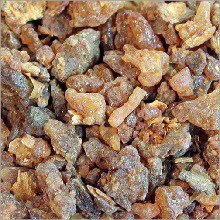
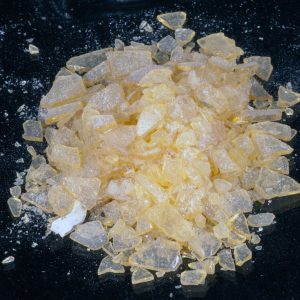
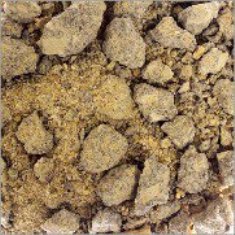
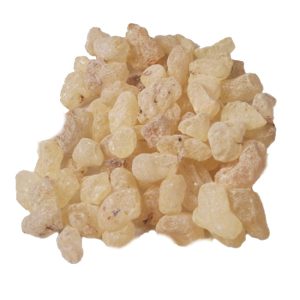
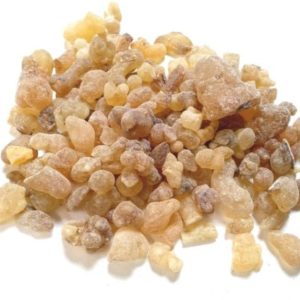
Reviews
There are no reviews yet.